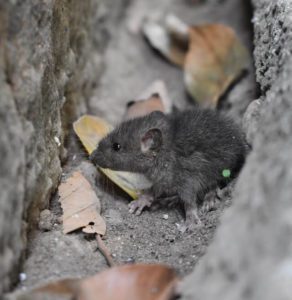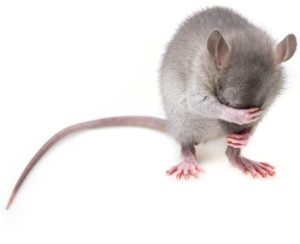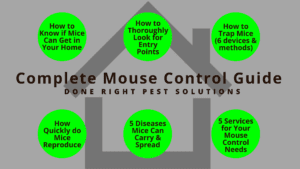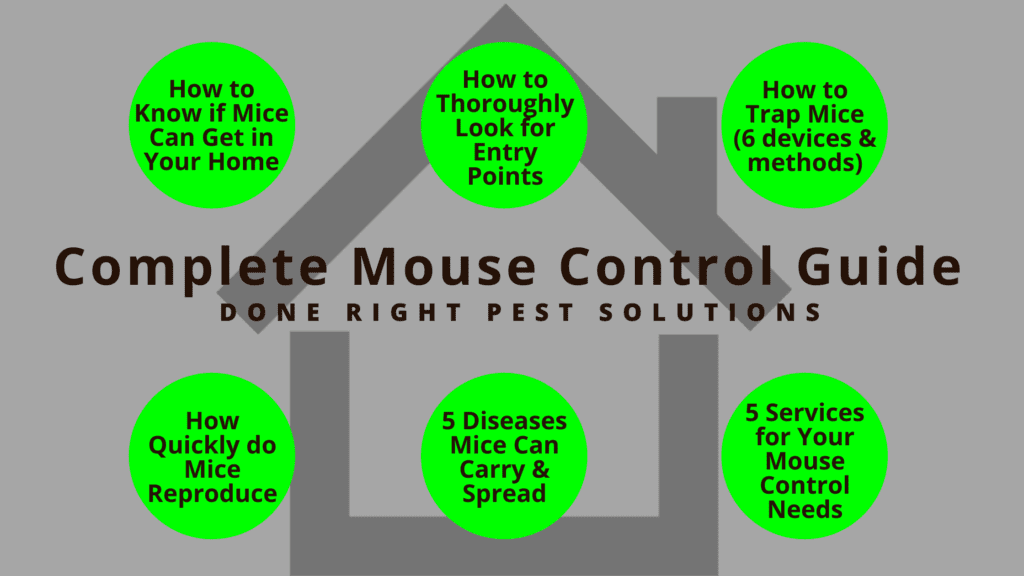When someone finds a mouse in their house, it’s usually quite startling. Whether you’ve found mouse activity that leads you to believe you have mice in your home, or you found a live or dead mouse itself, you’ve come to the right place to learn how to get rid of them.
In this complete mouse control guide we cover topics like: how to know if mice can get in your home, how to know where to look for mouse entry points, how to trap mice, how quickly do mice reproduce, the diseases mice carry, and the mouse services we offer.
Along the way you’ll learn details of how we perform our mouse services and how to stay calm throughout. Of course if there ever comes a point where you are tired of trying or would like to simply have the professionals handle your mouse control needs, give us a call. We’ll take care of it. 651-342-9489.
Read on to learn all in our complete mouse control guide! Done Right Pest Solutions is your premier company for all of your Minneapolis mice control needs or any of your Twin Cities metro area and beyond mice control needs.
Table of Contents
- How to know if mice can get in your home
- How to know where to look for mouse entry points
- How to trap mice
- How quickly do mice reproduce?
- Do mice carry diseases?
- Services we offer regarding mouse control
- Conclusion & next steps
How to Know If Mice Can Get in Your Home
Did you know mice can squeeze in through any crack or crevice as small as one-fourth of an inch in diameter? That’s about the size of an eraser cap point! (Rats can squeeze in through any opening as small as one-half of an inch in diameter). Mice do have bones, but they are very soft and can bend as they sneak through tight spaces. In this section you will learn how to know if mice can get in your home.

Once inside the home, they stay in warm places like the furnace room or laundry room, away from active areas of your home. They may make nests in wall voids or in hardly-touched storage boxes filled with soft materials, for example.
If you ever see a pile of little pieces of insulation, lint, or hair, you may very well have a mouse problem.
Mice also leave droppings everywhere they go. They don’t have much bladder control so they leave urine as well. Consequently, this is how mice can transmit diseases to people. It also serves as a pheromone scent for other mice that may be looking around for a warm place to stay. As you can see, mouse control is very important, and fall preventative mouse control is also very important.
Did you know mice can squeeze in through any crack or crevice as small as one-fourth of an inch in diameter? That’s about the size of an eraser cap point!
Quick Tips of Where to Check For Mouse Activity:
- Furnace room
- Around the sill plate up high for any mouse droppings
- Behind the washer or near the laundry vent for any mouse signs
- Storage room
- Any boxes with old clothes or other soft, fabric-type materials
- Behind boxes or storage shelves as able
- Attic or crawl space
- Whether your attic is a walk-in or crawl space, peak your head in with a flashlight to look around.
- Attics can be a play area for mice, check for mouse droppings
- Keep an eye out for any shredded insulation, this is also a sign of mouse activity
- Kitchen
- Behind the refrigerator and stove for mouse droppings
- Underneath the kitchen sink for mouse droppings
- Inside cabinets and pantries for teeth marks on pantry food
- Living room
- Mice’s teeth never stop growing throughout their life, so they eat a lot and the gnaw on things to help file them down.
- Some common things mice chew on are furniture, sheet rock or drywall, electrical wires, and more.
- Check for rub marks or grease marks. In frequently traveled areas, mice will leave a dark color along the walls from where their fur rubbed up against the wall. Those markings are the oils and dirt from their fur.
- The exterior
- Check the foundation. Learn more of closing mouse entry points in the next section.
Pro Tip:
 If you ever wake up in the middle of the night and can’t get back to sleep, take a walk around your home. Check the bathrooms, kitchen, and basement out. Most pests are nocturnal and if you can handle live pest activity, of course this can be a great time to check for pest activity. This is a great time to determine whether or not you need professional mouse control help.
If you ever wake up in the middle of the night and can’t get back to sleep, take a walk around your home. Check the bathrooms, kitchen, and basement out. Most pests are nocturnal and if you can handle live pest activity, of course this can be a great time to check for pest activity. This is a great time to determine whether or not you need professional mouse control help.
How to Know Where to Look for Mouse Entry Points
In this section, you will learn how to know where to look for mouse entry points. In the previous section, you learned that mice can fit into any opening one-fourth of an inch in diameter: the size of an eraser cap tip. Mice search for and find many little openings in a home through which they can squeeze.
They don’t have very good eyesight so they run right next to a structure. As their fur brushes up against the structure, it leaves pheromones, just like the droppings and urine they continuously leave. This alerts other mice of their presence and that your home or business may be a safe, warm home for them.
Mice often look for man-made openings, like an air-conditioning line or laundry vent. But if those don’t work, oftentimes Minnesota’s changing of seasons can create little cracks and crevices wide enough for mice to squeeze into. Because mice are so common due to Minnesota weather and the effects it has on a home’s foundation, this makes routine mouse control and prevention very important.
If you ever wake up in the middle of the night and can’t get back to sleep, take a walk around your home. Check the bathrooms, kitchen, and basement out. Most pests are nocturnal and if you can handle live pest activity, of course this can be a great time to check for pest activity.
What Areas Do I Look For Entry Points?
- laundry vent
- air-conditioning line
- around decks, patios
- under decks, porches
- along garage foundations
Mice can even get into your home from a crack in the pavement along your garage! Though that is less common, mice are very adventurous in the ways in which they get into homes for the winters.
Because we have no licensed contractors on staff, we do not close any openings larger than 1-inch in diameter, but can give some tips on how to close them yourself. Read on to learn more of mouse control: closing mouse entry points.
What Materials Do I Use?
Our technicians wear knee pads as protection as they inspect the foundation. If you want to use some knee pads or a foam pad to kneel on to inspect the foundation, by all means!
We use a copper-wire mesh to seal the openings, but you can use a steel-wool or other metal mesh.
You can also use a type of foam spray.
If you are going to use a foam spray, we would recommend the brand Great Stuff, as it has a bitter component to it so it will deter mice from chewing through it. Mice can and may still chew through it, but that bitter component makes it less likely that they may chew through it.
For bigger openings you may need a stronger adhesive still, like caulk.
For even bigger openings you may need to hire a contractor to seal the openings with cement work or other means. We also have a friend who is a handyman in the Twin Cities metro area! Call us for details.
Overwhelmed with all of this information? Don’t be! Give one of our experts a call and we can talk you through it, too: 651-342-9489.
How to Thoroughly Look For Entry Points?
- Start at the laundry vent on the exterior of the home
- Check the cover to make sure it is secure, so mice cannot get in that vent
- Keep in mind the size of openings they can squeeze into: 1/4 of an inch (about the size of the eraser cap top) (rats can squeeze into openings ½ of an inch)
- Make your way along the foundation, foot by foot, looking for anything into which a mouse can squeeze
- Be sure to check the air-conditioning line
- Search under decks and porches as best as you can for any openings along that foundation area
- Check areas where decks, patios, porches meet the foundation or the siding of the house
- Continue the process until you have crawled around the entire exterior of your home
- It is important to prepare your home every year and prevent mice in the fall

How to Trap Mice
Usually when a mouse enters a structure first it is an alpha mouse looking for some safe and warm lodging for its family. Alpha mice are very smart and are often the very last mouse to be caught.
After entering a structure, the alpha mouse often brings a mate and reproduces. The mate or the young juvenile mice are typically caught first.
Because the alpha mouse is cunning, you have to think like a mouse in order to catch it! In this section you will learn how to trap mice with the following methods.
Usually when a mouse enters a structure first it is an alpha mouse looking for some safe and warm lodging for its family. Alpha mice are very smart and are often the very last mouse to be caught.
Snap Traps
You can purchase plastic or wooden snap traps, place some peanut butter or cheese as a bait and wait for the catch.
The snap trap is often effective, if you are willing to put in the work, trial and error of catching the mouse by snap trap.
Mice feel safest up against walls, so if you are using any of these traps, place them flush against the wall and you will have a higher chance of success.
Mice are very light. An adult mouse only weighs about 1 ounce. As a result, they can often lick the peanut butter or steal the cheese right off the platform without being caught.
To help increase your chance of success, spread the peanut butter or cheese (we would recommend a cheese spread or maybe a softer cheese you can smear) into the grooves of the snap trap bait placement. Snap traps can be very effective in mouse control.
Sometimes it can be difficult to learn how to trap mice, but we are here to help!
To help increase your chance of success, spread the peanut butter or cheese (we would recommend a cheese spread or maybe a softer cheese you can smear) into the grooves of the snap trap bait placement.
Sticky Traps
You can purchase a package of sticky traps, which are thin sheets of hard cardboard with a glue substance on one side. Then, set the trap by peeling off the protective layer.
Sticky traps can be effective, though not in dirty, dusty, or moist conditions. They are also less effective in extreme hot or cold temperatures.
Juvenile mice are often caught by this trap. Be aware that these traps do not kill mice immediately. When caught by sticky traps, mice will squirm to try to get free and squeal for help. Some mice may even chew off a limb to get free.
It takes backbone to learn how to trap mice and it is important to know these triggering things that could happen so you can mentally prepare.
Still, sticky traps can be effective in mouse control.
Humane Traps
You can purchase a box-like trap that allows you to release the mouse if you so choose. Otherwise they simply starve to death in this inescapable box.
Mice feel safe in closed in spaces, so these traps can be effective. Pest control companies are in the business to eradicate pests, and therefore cannot use catch-and-release methods.
If you choose this option, make sure your rodent proof the exterior of your home, to ensure that they simply don’t find their way back and enter again.
If you’re willing to put in the work of catch-and-release, humane traps can be effective in mouse control.
Overwhelmed with all of this information? Don’t be! Give one of our experts a call and we can talk you through it, too: 651-342-9489.
Over-The-Counter Bait or Poison
Over-the-counter brands like D-Con or Tomcat have been useful to kill mice in homes. You can purchase these products without having a pest control license and place the bait around your home in secure locations.
If you’re going to go the bait route, we would recommend getting a professional pest control expert to exterminate this way, or at least obtain a commercial-grade product that isn’t going to cause the mice to leave blood behind or smell.
If you have pets, make sure to use bait or poison in a type of station or in a location where your pets can’t reach them.
Also make sure the secondary transfer is so low that pets or wildlife outside would not be harmed from eating a mouse that had consumed the bait or poison.
Mice are curious, but also cautious. It may take 1 to 2 days for the bait to attract the mice. Once the mice consume our bait, they go about their business.
It takes research to learn how to trap mice, but we are here to help. As long as you’re cautious and thorough, poison or bait is effective in mouse control.
If you have pets, make sure to use bait or poison in a type of station or in a location where your pets can’t reach them.
Also make sure the secondary transfer is so low that pets or wildlife outside would not be harmed from eating a mouse that had consumed the bait or poison.
Noise Devices
Some folks purchase a type of device that emits a high pitched noise that mice can hear and do not like. Do not use this option if you have pets, as they can hear tones humans cannot.
These devices come in different shapes and sizes and you can hide them around your home.
We do not recommend these devices as they do not eradicate pest problems or potential pest problems, they simply mask them, but they may keep mice out of homes because mice don’t like the sounds these devices emit.
While these devices do not eradicate mice, they can help with some aspects of mouse control.
Peppermint Oil
Peppermint oil has been used to treat mice in homes.
This product is a repellent to mice: they don’t want to be near it. You can place peppermint oil around your home to repel mice, perhaps around the interior sill plate where mice would come in. Stop them in their tracks before they even get too far inside!
We do not recommend this option as it is a repellent only, but when coupled with rodent proofing your home, it can be effective. We are in the business to eradicate pests, not simply repel them. Still, with the use of other methods listed in this section, peppermint oil can be effective in mouse control.
Areas to Place Devices:
- Kitchen
- Behind the fridge or stove
- Under the sink
- (only place devices in the kitchen if you already have mice there, otherwise keep all of the devices in the basement)
- Laundry room
- Behind a washer or dryer
- Along the edge of the wall where the mice may travel
- Near the laundry vent
- Furnace room
- On top of the sill plate
- Along the edge of the wall where mice may travel
- Hard to reach areas
- Attic
- Crawl space
Check out our infographic: How to Perform Your Own Mouse Service, Done Right for the full list of tips and tricks condensed in an easy to digest informative format.
How Quickly Do Mice Reproduce?
 From previous sections you learned how mice can squeeze into tiny openings and how to search your home for mouse activity. You also learned how mice leave such little evidence you might not notice they are in your home and how to close the entry points.
From previous sections you learned how mice can squeeze into tiny openings and how to search your home for mouse activity. You also learned how mice leave such little evidence you might not notice they are in your home and how to close the entry points.
There is a saying we’ve heard from clients in the pest control industry: “If I’ve seen one mouse I probably have more.” This phrase is true, knowing the life cycle and gestation cycles of mice, and it proves the importance and immediacy of mouse control.
If you are looking for mouse control and prevention for your apartment, check out our Apartment Moving Guide, or Redfin’s Ultimate Guide on How to get Rid of Mice in Your Apartment.
The House Mouse Life Cycle
The female mouse’s gestation period lasts 19-21 days. Each litter consists of 3 to 14 baby mice, called pups. The average litter size is between 6 and 8 pups. One female mouse can have between 5 and 10 litters per year. For quick math of 5 pups and 5 litters per year is 25 pups, but we know it will be more than that!
Female mice reach sexual maturity at 6 weeks of life. So, if only 1 or 2 mice slipped into your home in the middle of the night, it isn’t long before those 2 turn into 8 or more mice, and so on. If left untreated, mouse reproduction can quickly become exponential versus linear.
Mice are born blind and without fur or ears. After 4 days, mice develop ears. After 6 days they develop fur. And not until day 13 do their eyes open. Pups are weaned from their mothers after 21 days. Once weaned, they are free to roam about.
In the wild mice only live a year or less. Whereas inside a protected environment, such as a house, mice can live between 2 and 3 years. As a result, they will have plenty of time to reproduce. This is another reason why mouse control is so important.
Female mice reach sexual maturity at 6 weeks of life. So, if only 1 or 2 mice slipped into your home in the middle of the night, it isn’t long before those 2 turn into 8 or more mice, and so on. If left untreated, mouse reproduction can quickly become exponential versus linear.
Do Mice Carry Diseases?
While cartoon mice, like Jerry from Tom & Jerry are cute, little furry mice that invade your home are not. Mice can pose a threat to the health and safety of your home. In this section, learn how they operate and 5 types of diseases mice carry.
Mice’s teeth never stop growing throughout their life. As a result, they eat a lot and they gnaw on things to help file them down. Some common things mice chew on are furniture, sheet rock or drywall, electrical wires, and more. It is unknown if any diseases are spread through mouse saliva, but it is good to be aware of the damaging effects of having mice in your home.
Because mice have no bladder control, they leave droppings and urine wherever they go. Keep in mind that a lot of the illness and disease they spread are through their urine and droppings.
There are more than 5 diseases mice carry, but here is a list of the 5 most common diseases mice carry.
- Rickettsialpox is caused by bacteria that is spread by mice. This disease is very similar to chickenpox, but is much milder. Even left untreated, it resolves within 2 to 3 weeks. Still, it could be a nuisance to your home and family.
- Leptospirosis can be spread through infected mice’s urine while moist. This illness is more common in tropical and temperate climates of the world. However, it is important to be aware as mice can travel all over the world through cargo and other means of transportation. Severe Leptospirosis can cause bleeding in the lungs or meningitis.
- Though more common in deer mice, Hantavirus Pulmonary Syndrome is a severe illness that is caused by exposure to an infected mouse’s droppings or urine in an enclosed space.
- Tularemia is a bacterial disease that is contracted through dead mice or mice bites. Some people who have contracted Tularemia don’t show symptoms, while others become very ill. In severe cases Tularemia can lead to pneumonia.
- Lymphocytic Choriomeningitis (LCM) is similar to meningitis, except the cellular infiltration occurs around the cerebral area (brain and spinal cord).
- Bubonic Plague bacteria infest fleas, which bite and harbor on rodents frequently. Infected rodents live near humans and transmit the disease through fecal material, bodily fluids, or bites. Though treatable with modern medicine, the plague exists in any area where rodents live.
- Though the Bubonic Plague is not as scary as it was in the historical Black Death, with the rise of homelessness in California, small outbreaks have risen. With early diagnosis, the plague is not spread from person to person.
Read more about other illnesses and diseases that other types of rodents, like the deer mouse or white-footed mouse on the CDC site.
Bottle flies can also carry these bacteria causing these illnesses and diseases. PCT “Double Trouble” has an article titled that links rodents and bottle flies, highlights diseases they carry and transmit, and next steps to ease fears.
Mice’s teeth never stop growing throughout their life. As a result, they eat a lot and they gnaw on things to help file them down. Some common things mice chew on are furniture, sheet rock or drywall, electrical wires, and more. It is unknown if any diseases are spread through mouse saliva, but it is good to be aware of the damaging effects of having mice in your home.

Staying Calm When There are Health Risks
Bacteria, viruses, illness, and disease have roamed the earth longer than humans. While it is important to be careful, it is also important to realize that disease transmission is low among these rodents and people. If you have mice, cautiously clean up any droppings or urine and sanitize the affected areas. Do not stir up the toxins and particles and breathe them in or ingest them. Sanitize your hands after cleaning up after rodents.
It is important to be educated on the threat of disease and illness that rodents carry, but it is also wise to do your part and know that that is often enough. Thankfully modern medicine cuts the likelihood of death from any of these illnesses down substantially.
The COVID-19 pandemic unmasked the hard truth that it’s difficult to read of threats against public health. While these infected mice could be living in your home, that doesn’t mean that you will contract the disease, but it is imperative to eradicate mice quickly. Mice affect home and health, and there are more than 5 types of diseases mice carry, but you just learned of the most commonly spread diseases.
Rest assured that you can eradicate the mice in your home with solid professional advice. If at any time you’d like professional mouse control service, we’d love to help you out. 651-342-9489.
While it is important to be careful, it is also important to realize that disease transmission is low among these rodents and people. If you have mice, cautiously clean up any droppings or urine and sanitize the affected areas. Do not stir up the toxins and particles and breathe them in or ingest them. Sanitize your hands after cleaning up after rodents.

Services We Offer Regarding Mouse Control
When you’re in a bind, it’s nice to have options. Our staff at Done Right Pest Solutions wants you to have options and pick what is best for your home, your family, your budget. That’s why we have 5 options for mouse control.
There are quite a few tactics pest management professionals employ for mouse control, and here we tell you our tactics.
Read this section to learn of the 5 options for mouse control, which provides information so you can best prepare for mice. Or just give us a call for a free quote for all of your Minneapolis mice control needs: 651-342-9489.
Mouse Inspection
Every good mouse service starts with a mouse inspection. But what if you don’t know if you have mice? What if you just hear some scratching in the walls, but wonder if it is squirrels or maybe nothing?
We have a mouse inspection that is $179 plus tax, but that fee is waived/applied to the cost of service upon services rendered. In essence, the mouse inspection portion is free with any mouse service.
The mouse inspection does NOT come with any warranty or follow-up visits.
Mouse Exclusion
Every successful mouse service includes a full exterior exclusion service. We also offer just the exclusion service for a fraction of the cost. So, if you typically get mice in the fall, but haven’t gotten mice yet, consider getting a mouse exclusion service to prepare for mice season.
The pricing is based on square footage, as the technicians go around the foundation on their hands and knees looking for the entry points.
The mouse exclusion service does NOT come with any warranty or follow-up visits. It can be applied to a mouse service if you do decide you’d like a warranty.
1x Mouse Service
Our one-time mouse service is one of our most commonly purchased services. This service is complete with a full exclusion service and an interior inspection of the house.
Rodent control devices, like bait stations, are applied in the basement furnace and laundry rooms, and/or other locations as deemed necessary by the technician.
Included with a one-time mouse service is a 2 week follow-up visit and a 3 month warranty. The warranty is from the first date of service, but means that if any additional follow-ups are needed, they are NOT charged.
Overwhelmed with all of this information? Don’t be! Give one of our experts a call and we can talk you through it, too: 651-342-9489.
Seasonal Vole Service
Voles are in the same family as field or house mice. Voles thrive on roots and plant bulbs, wreaking havoc on yards and gardens.
We offer an add-on vole service to our Peak Seasons Plan. We no longer offer one-time vole service due to these devastating yard pests being unrelenting in nature. We use specialized vole equipment and bait, combined with a 2x monthly approach throughout the warm months.
The service comes with a seasonal warranty.
Peak Seasons Plan – Annual Mouse Service
Finally, our most commonly purchased Residential Pest Control service is called the Peak Seasons Plan. This option covers you for a 12 month warranty instead of a 3 month warranty, and it comes with 3 exterior and interior treatments for insect control and prevention, as well as rodent control and prevention.
Our Peak Seasons Plan is our most commonly purchased residential pest control plan because it covers such a wide variety of pests that most encounter on a semi-regular basis throughout the year without pest control.
- The spring exterior power spray targets paper wasps, spiders, centipedes and millipedes, pavement ants, and other spring invading pests.
- The summer foundational treatment targets carpenter ants and other hot weather, destructive pests like wood boring beetles.
- The fall exterior power spray targets Asian lady beetles, boxelder bugs, stink bugs, hornets and wasps, and other fall invading insects.
- Part of the fall service is providing preventative mouse control so mice can’t get in over the winter.
Check out our article, “How to Know if the Peak Seasons Plan is for You” to answer all of your FAQs about the service. Or, give us a call at 651-342-9489.
For all of your Residential Pest Control needs, look to the experts at Done Right Pest Solutions.
Our Peak Seasons Plan is our most commonly purchased residential pest control plan because it covers such a wide variety of pests that most encounter on a semi-regular basis throughout the year without pest control.
Conclusion & Next Steps
You have learned a lot in this Compete Mouse Control Guide, thank you so much for reading! Now you know how to tell if mice can get in your home and how to know where to look for mouse entry points. We shared our tips and secrets for closing mice entry points.
We also gave the low-down on how to trap mice, 6 trapping and repelling methods, including tips on where to place the devices. Ultimately you learned the importance of quickly ridding your home of mice due to the diseases mice carry and how quickly mice reproduce.
We shared 5 different mouse control services we offer, from little need to great need, from mouse inspection to annual mouse service.
If you ever have any questions on any of this content or how it relates to your home, we hope you’ll give us a call at 651-342-9489 or email us at donerightpestsolutions@gmail.com. We are your go-to company for all of your Minneapolis mice control needs or Twin Cities metro area and beyond mice control needs.
We are here when you need us,
Done Right Team

Was this guide helpful? Let us know what you thought in the comments!
Looking for more pest control information? Check out our rodent category page within our blog. Sign up to receive our free email newsletter.

